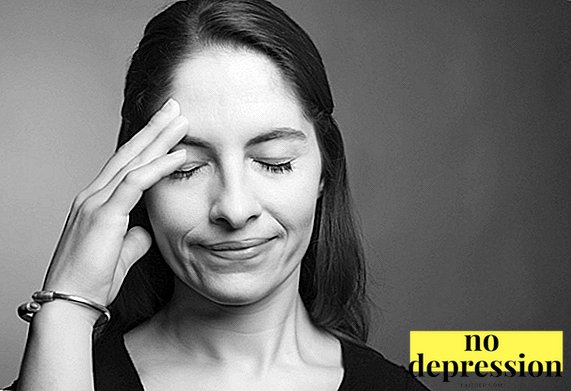Throughout life, we accumulate a lot of stereotypes. First, they prevent us from learning, then - to start a relationship, work, communicate. Therefore, the attitude to the concept is often negative. But who invented these patterns of thinking? Why are they needed if they do not leave us free rein? And how to learn to recognize your stereotypes? In one article to talk about all the patterns of thinking will not work. But you can talk about the most popular.
What is a stereotype
A stereotype is a stereotyped view of a person, a phenomenon, a social group, or an event. Patterns of thinking - the result of evolution. All people have them, so it’s better to take them for granted. Our brain has a certain limit of knowledge, attention, and creative thinking. To save energy, the brain simplifies the picture of the world, making it more understandable.
Stereotypes are automated programs established in our brain that accumulate genetic and acquired experience. That is, our genetics is a certain foundation for thought patterns. But themselves stereotypes are not something innate. They arise from the information that parents and surroundings give us.
Our ancestors thought patterns helped not only to live, but also to survive. When the enemy approached the shaggy ancestor, he had no time to philosophize: to flee or reflect. Who ran - survived, philosophers were eaten. So historically, the division by color, religion, sex, mode of communication was fully justified. Many people today remain conservatives: they honor the old traditions, do not recognize outsiders and teach children all of this.
Our life is changing so quickly that the stereotypes that we have adopted from our ancestors cease to protect us. Sometimes prejudices seize us so much that they acquire a negative hue and significantly distort reality.
Examples of stereotypes:
- Women dream of love, and men only want sex.
- Women love only the rich / men love long-legged blondes.
- All the rich are thieves.
- To earn a lot of money with honest work is impossible.
- Beats - it means love.
- The most expensive - the highest quality.
But there is also good news: stereotypes are not something permanent, they can be destroyed. For example, after moving to another country, many cultural, ethnic, or racial prejudices are dispersed. Many, but not all.
The history of the concept of "stereotype"
The word stereotype comes from two Greek words: “hard” and “hit”. Translated means "trail of impact" or "solid imprint." It was first used in 1796 in typography, where a stereotype was called a monolithic printing form or cliché, with which it was possible to print the entire page. In a metaphorical sense, stereotype is a fixed version of something, the established standard.
In 1922, an American writer, journalist Walter Lippman (1889-1974) coined the term "social stereotype" - an emotionally colored, stable image of a group that is transferred to all of its members. In such a model, a disorderly, diverse world appears clear and categorized. Such a kind of “dismemberment” of society is a defense mechanism, without which it was difficult for people to coexist.
W. Lippman described four properties of patterned thinking:
- Simplify reality. Prejudices describe the world around us in two or three words (for example: all men are goats / all women are bitches).
- False statement. Every nation or nation has historically established patterns regarding a foreign culture, representatives of other nations. For example, many of the English are aristocratic snobs, and Hindus - thin yogis in the lotus position. But the Englishman or Hindu is not obliged to conform to our ideas about him.
- The embodiment of someone else's life experience. When we grow up, we absorb other people's stereotypes, without subjecting them to rethinking, criticism.
- Unchanged. Prejudice is stronger than reality. If a woman is convinced that "the path to the heart of a man lies through the stomach," she will feed every friend. And if he meets a man who is indifferent to food, decides that it was the only man in the world who does not like to eat.
Later thanks to the works of the American philosopher Hilary putnam (1926-2016) stereotype is actively studied in linguistics. Putnam developed the hypothesis of the division of linguistic labor, according to which terms, definitions and linguistic patterns are formed in each work collective, which are understandable only to members of this group. For example, programmers, doctors, and lawyers speak in their own language. And they use not only terminology, but also their professional jokes, jokes.
Stereotyping multidimensional. It manifests itself in various spheres of human activity and is studied by many sciences: sociology, political science, cultural studies, ethnography, psychology, linguistics, and cognitive science. Hard patterns of thinking give rise to prejudices towards people with special needs, with different skin color, towards members of sexual minorities or religious denominations. They are actively discussed and condemned in society. Feminists, political and public figures, international organizations of the United Nations and UNESCO are fighting with prejudices.
But there are patterns of perception that are part of ourselves. They grow together with us so much that we do not even guess about their existence. You have to fight with your stereotypes yourself.
5 stereotypes that prevent us from living
The negative side of stereotypes is prejudice. When we look biased at others, we often act unfairly or harm our selves and our future.
Ethnostereotypes
Ethnostereotypes are stereotyped ideas about themselves and other nations. They existed always and continue to exist. In most cases, ethno-stereotypes harm mutual understanding and lead to unhappy consequences. But if prejudices against "outsiders" are recognized as the norm, they become fertile ground for racism, terrorism, extreme nationalism, and discrimination. If you ask yourself a question about the inhabitants of other countries, the imagination immediately draws the image of a "typical" representative:
- "Typical american": friendly, hardworking, self-assured, always in a hurry.
- "Typical Chinese": short, unceremonious, noisy, chewing rice alone.
- "Typical englishman": discreet, dismissive, holding a cup of tea in one hand, a plate of oatmeal in the other.
- "Typical french": smug, fashionable, loving, loving to eat snails and frogs.
We laugh with jokes about the Chukchi or the Armenian radio, we love to joke about the leisurely nature of the Finns or the stinginess of the Jews. Of course, the ethno-stereotypes on which the anecdotes are built can be ignored. But everyday stereotypes about representatives of other cultures primarily harm us. Ethnic prejudices can be compared with the blinders that narrow our horizons, prevent us from meeting, falling in love, socializing, enjoying the culture of other countries.
Gender or gender
Gender stereotypes are well-established and distorted ideas about female and male images. Ideas about men and women have been formed throughout history, beginning with the days of male hunters and female custodians of home traditions. Antique myths and romantic ballads added additional strokes to the portrait. In the XXI century, gender roles have changed, but the myths about "Alpha-male" and "Gentle nymph" are still popular. We list the ones who have drunk on the edge:
- Guys do not cry.
- The role of 3K woman: kinder, kyukha, church (children, kitchen, church).
- All blondes are stupid.
- Homework for a man is a shame.
Sounds crazy, right? But it was on this that many of us were brought up. Such patterned thinking acts as a magnifying glass, which further emphasizes the differences between a man and a woman. But if you do not oppose the male to the female, the relationship will become more interesting, colorful and diverse.
Relationships and family life
Since our childhood, we have been investing templates about ideal relationships since childhood. We receive most of the information from our parents, but our own corrections are made by the books and stories of others "about how they should." Often, boys and girls start a relationship and get married, wearing rose-colored glasses. The main rule of a strong relationship is: no one knows what is best for you. But there are several popular templates that will certainly lead to trouble and complicate life:
- It will change after the wedding.
- I recognize my man at first sight.
- True love is always a holiday.
- In a relationship there should be no commitment.
- Opposites attract.
Sometimes a relationship collapses because of nonsense, and a while later we sigh: "Why did I let my prejudices guide me?" Templates often help us in different life situations, but mostly they interfere. After all, cultural and gender codes are constantly changing. What was the norm for our parents is no longer always applicable in our lives.
Advertising
In 2012, the law banned the advertising of drugs "people in white coats." Because to the people reminding doctors, we trust unconditionally. It was easier to introduce a ban at the legislative level. Than to try to debunk this stereotype. Consumer stereotypes are generally accepted prejudices. It can be images, people, phrases, interiors. Using your stereotypes. We ourselves "finish" the missing and begin to believe:
- In that hedgehogs carry ripe apples on their backs right on the plant (although hedgehogs eat beetles and worms).
- In fact, a grandmother in a clay pot (a typical stereotype of village life) prepares tasty sour cream and kefir.
- In that wristwatches are worn by successful businessmen or skillful seducers who attract women (using gender stereotype).
- You can trust the advice of an old woman (famous Aunt Asya and Mr. Proper's grandmother).
Advertising stereotypes are a mass phenomenon. They are used by small companies and large brands. When developing advertising, psychologists are involved, so we regularly come across new tricks or manipulations. To resist such pressure is difficult, but real. It is necessary to connect common sense and proceed from their needs, and not from promises.
Nutrition and healthy lifestyles
A healthy lifestyle is in fashion today. And it is beautiful. But besides the promotion of proper nutrition and sports we are offered the next stereotypes in which we readily believe. More recently, the popular opinion was about the "wide bone", which does not lose weight. Then, protein or carbon-free diets were held in high esteem, without which it was inconceivable to lose weight. In the wake of modern enthusiasm, we buy running shoes and a slow cooker, but for some reason we’re not losing weight again. Perhaps our prejudices are guilty of this:
- Slimming is impossible without an enema.
- The less you eat, the faster you will lose weight.
- You can lose weight if you do not eat after 6 pm.
- Exotic fruits and vegetables are better than native ones.
- The most wholesome foods are low fat.
Sometimes we deceive ourselves and believe only what we want to believe. But more often - we fall for advertising tricks or promises of instant weight loss. But before you buy diet soda or soy milk, you should connect common sense and intuition. After all, stereotypes about a healthy lifestyle can cost us too much. Healthy foods are not so healthy, although they are several times more expensive than their counterparts.
findings
- From the point of view of psychology, a stereotype is a thinking robot that sorts the information that enters our brain.
- Stereotypes are good. They save mental energy, help us instantly respond to what is happening.
- Stereotypes are bad. They limit our capabilities, make reality more primitive.
- With stereotypes, life is calmer, and without them - more interesting.
- Thinking patterns are not innate. They can change under the influence of circumstances or with an effort of will.
- The negative side of stereotypes - prejudices that complicate our lives.
- Thinking patterns do not take into account individual differences between people; therefore, they can cause social stratification or discrimination.



